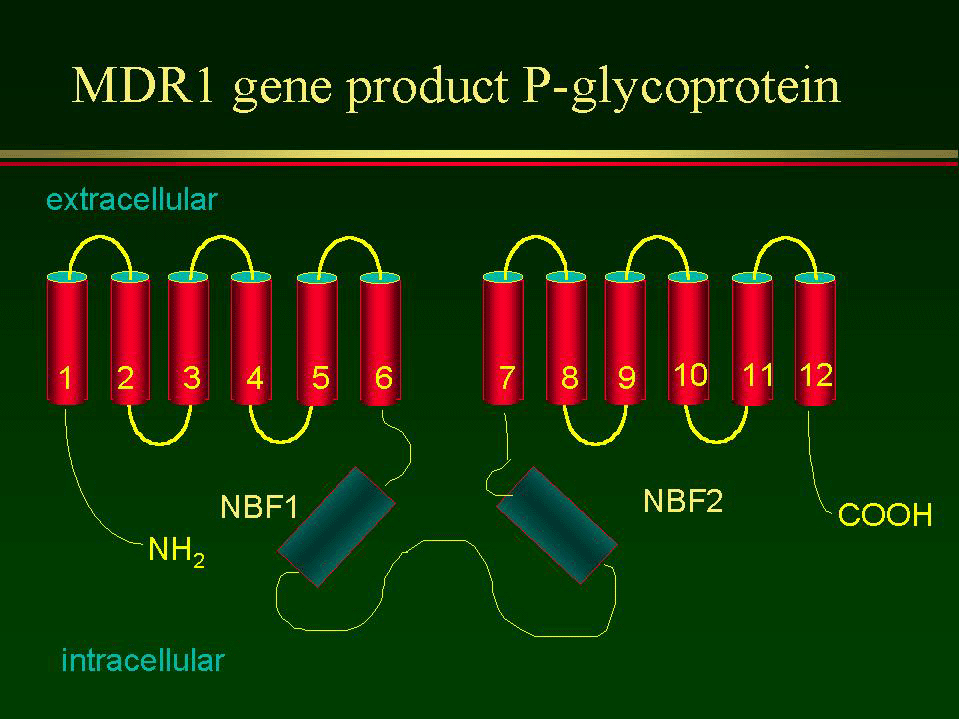
 |
Multidrug Resistance |
Multidrug
resistance (MDR) is typically
defined as the ability of a living cell to show resistance to a wide
variety of structurally and functionally unrelated compounds. In mammals,
tumours, which are initially sensitive to cytotoxic agents, often develop
resistance to a broad spectrum of structurally unrelated drugs. The
widespread occurrence of MDR in tumour cells represents a major impediment
to successful cancer chemotherapy. Cultured cell lines resistant to
multiple drugs express increased levels of a 170 kDa membrane glycoprotein
named P-glycoprotein (P-gp) encoded by
MDR1
.
It is an ATP-dependent extrusion pump for drugs and physiological
substrates.
Resistance
to antifungals evolves slowly during the course of chemotherapy. Studies
so far suggest that antifungal resistance in Candida is a
multifactor phenomenon. The primary mechanisms include alterations in
ergosterol biosynthetic pathway by the over expression of ERG11
which encodes the drug target enzyme 14a-lanosterol
demethylase or by an alteration (point mutations) in target enzymes which
leads to reduced affinity to fluconazole. Reduced intracellular
accumulation of drugs is another prominent mechanism of resistance in Candida
wherein drug extrusion pumps belonging to ABC ( ATP binding cassette) and
MFS (Major Facilitator) super families
of proteins are over expressed. We and others have demonstrated
that genes encoding ABC or MFS proteins are over expressed in azole
resistant clinical isolates of C.albicans
Furthermore; Candida cells which show enhanced
expression of efflux pumps encoding genes also show simultaneous increase
in the efflux of drugs thereby directly linking the pump activity with
cells ability to confer antifungal resistance. Efflux of incoming drug
prevents cells to accumulate lethal concentration of azoles and enable
them to survive.
Interestingly,
drug inactivation that is very common in bacteria has not been observed in
Candida cells. Recent studies on transcriptional
profiling of sensitive versus resistant clinical isolates and that in
presence or absence of azoles are revealing even more complexities in
multi-drug resistance.
Further
Reading:
Prasad,
R., Worgifosse, P.D., Goffeau, A. and Balzi, E. (1995) Curr. Genet.
27, 320-329.
Drug
Resistance Mechanism of Human Pathogenic Fungi. Prasad, R.,
Sneh Lata Panwar and S. Krishnamurthy, in Fungal Pathogenesis
Principles & Clinical Applications, Eds. Cihlar, R. L. and
Calderone, R. A., Marcel Dekker, Chapter 26, pp 601-631, (2001).
Drug
Resistance in yeasts an Emerging Scenario. Sneh Lata Panwar,
Smriti and Prasad, R. Advances in Microbial Physiology,
Review, Vol 46, pp 155-201 (2002).
Molecular basis of antifungal resistance, Prasad, R. Invited chapter in Pathogenic Fungi: Cellular and Molecular Biology Eds Giocoda San-Blas and Richard Calderone, Horizon Scientific Press, USA (2004) in press.